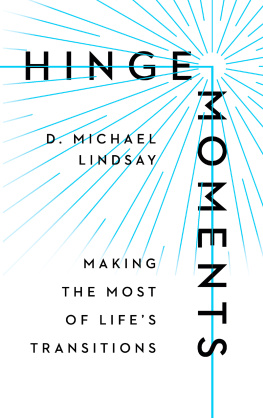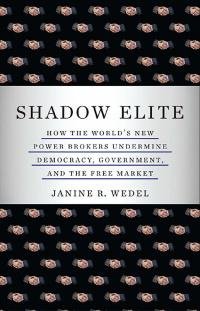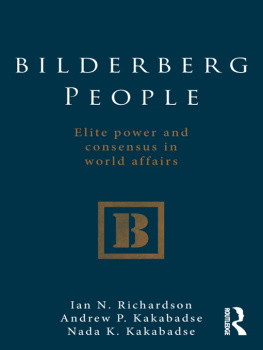
Praise for View From the Top
This is a seminal and compelling work. Dr. Michael Lindsay, university president and sociologist, gained unprecedented access to hundreds of leaders of America's elite institutions, and reached many unexpected conclusions. For example, it's not a privileged upbringing, but the influence of a caring mentor early in a developing career (as well as grit and opportunity) that launches careers of highly influential leaders. Dr. Lindsay found that the best leaders are not primarily ego-driven, but are able to influence a shared organizational vision and submerge their egos so as to be credible stewards of a greater cause. View From the Top reveals the hidden attributes of those blessed with the platform of leadershipand explores what defines a leader's identity beyond the title on their business card.
Rich McClure
President, UniGroup
(United Van Lines and Mayflower Transit)
Michael Lindsay's View From the Top recounts the experiences of a wide variety of leadersin both success and failureto reveal a deeper understanding of leadership: cause-oriented, people-driven, sacrificial, and reflective. Drawing from a variety of fields, Dr. Lindsay draws out some of the common elements of excellence. Anyone interested in the subject of leadershipor interested in exercising itwould benefit from reading View from the Top.
Michael Gerson
Columnist, the Washington Post
This is an informative and inspiring book for any leader, drawing on unprecedented personal access and a keen sense of the dynamics of leaders' institutions and personal lives. It contains both celebrations of the ways power can be used for good, and warnings of how slippery its effects can be on both leader and led. It is an indispensable catalog of stories and insights for those of us who want our use of power to be both effective and redemptive.
Andy Crouch
Executive editor, Christianity Today,
and author, Playing God:
Redeeming the Gift of Power
Cover image: Elevator Up-and-Down Button Image Source/Corbis
Cover design: Chris Wallace
Copyright 2014 by D. Michael Lindsay, Ph.D. All rights reserved.
Published by John Wiley & Sons, Inc., Hoboken, New Jersey.
Published simultaneously in Canada.
No part of this publication may be reproduced, stored in a retrieval system, or transmitted in any form or by any means, electronic, mechanical, photocopying, recording, scanning, or otherwise, except as permitted under Section 107 or 108 of the 1976 United States Copyright Act, without either the prior written permission of the Publisher, or authorization through payment of the appropriate per-copy fee to the Copyright Clearance Center, 222 Rosewood Drive, Danvers, MA 01923, (978) 750-8400, fax (978) 646-8600, or on the web at www.copyright.com. Requests to the Publisher for permission should be addressed to the Permissions Department, John Wiley & Sons, Inc., 111 River Street, Hoboken, NJ 07030, (201) 748-6011, fax (201) 748-6008, or online at www.wiley.com/go/permissions.
Limit of Liability/Disclaimer of Warranty: While the publisher and author have used their best efforts in preparing this book, they make no representations or warranties with respect to the accuracy or completeness of the contents of this book and specifically disclaim any implied warranties of merchantability or fitness for a particular purpose. No warranty may be created or extended by sales representatives or written sales materials. The advice and strategies contained herein may not be suitable for your situation. You should consult with a professional where appropriate. Neither the publisher nor the author shall be liable for damages arising herefrom.
For general information about our other products and services, please contact our Customer Care Department within the United States at (800) 762-2974, outside the United States at (317) 572-3993 or fax (317) 572-4002.
Wiley publishes in a variety of print and electronic formats and by print-on-demand. Some material included with standard print versions of this book may not be included in e-books or in print-on-demand. If this book refers to media such as a CD or DVD that is not included in the version you purchased, you may download this material at http://booksupport.wiley.com. For more information about Wiley products, visit www.wiley.com.
ISBN 978-1-118-90110-6 (cloth); ISBN 978-1-118-90139-7 (ebk); ISBN 978-1-118-901151 (ebk)
Introduction
What? What does that mean, I'm not the job? I could hardly hear Price, the search consultant, on my cell phone over the screeching of the subway car pulling in next to me. I was changing trains at the Park Street T station in downtown Boston, on my way to interview Diana Chapman Walsh, the highly successful president of Wellesley College. I had traveled to Boston from Houstonwhere I worked as a professor at Rice Universityfor a dual purpose. Not only was I completing additional interviews for my research project, but I had come to be interviewed myself. I was a candidate for the presidency of a Christian liberal arts college north of Boston, Gordon College.
You got the job! he repeated. This time I understood. In that moment, surrounded by strangers in that subway station, my life changed forever. I agreed to meet the board chair and the head of the search committee back at the hotel after the Walsh interview, and I hung up in a euphoric daze. I don't know how I managed to find my way to the Cleveland Circle T stop where I met up with Walsh, but I sobered up as soon as we greeted. I had been conducting interviews with leaders like Walsh for years, but now I had an even keener interest in learning from her. What went well for her early on, and what missteps does she wish she could do over? How does she handle her critics, including her inner critic? The lessons about leadership and power that I had been picking up for years were no longer strictly academic but were suddenly, startlingly relevant.
In other words, my social-scientific study had begun to morph into something more. The insights I had been gathering, sorting, and coding from interviews I conducted became a second doctoral education of sorts for meone where the professors shared not only their achievements but also their failings, where their personal and institutional lives were the curriculum, and where the student's task was to synthesize these insights and then draw his own conclusions. What follows is, in essence, my dissertation from this priceless education.
The research took 10 years to complete and formed the largest study ever undertaken based on in-depth interviews with high-profile leaders in the United States. There is great diversity among the leaders I met; they work in different sectors, have different backgrounds, and pursue varied purposes. They include over 250 CEOs (including the leaders of 20 percent of the Fortune 100), former presidents Jimmy Carter and George H. W. Bush, and dozens of cabinet secretaries, members of Congress, and heads of federal bureaus and agencies representing nine White House administrations (from Johnson to Obama). Also included are more than 100 leaders of the world's largest nonprofit organizations, including the American Red Cross, M.D. Anderson Cancer Center, and Harvard and Stanford universities. Working with a team of two dozen research assistants, I collected data on the lives and institutions of all 550 people I interviewed and then applied hundreds of analytic frames to their responses and life stories, searching for patterns as well as inconsistencies in their ascent to the upper reaches of power. The combined response rate of interviews requested was 87 percent.
Next page







